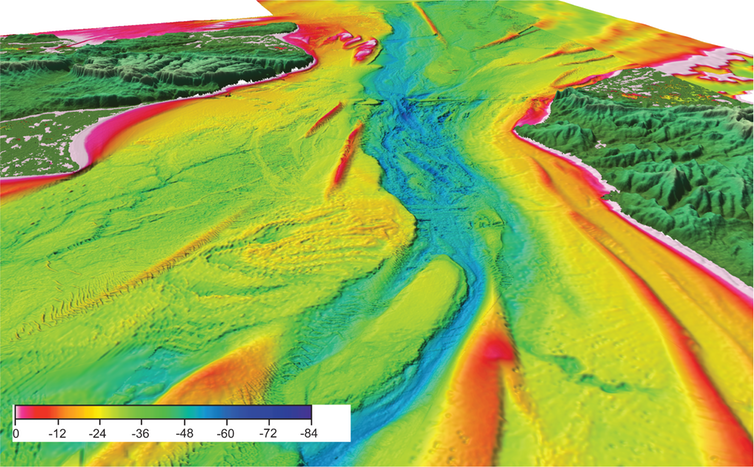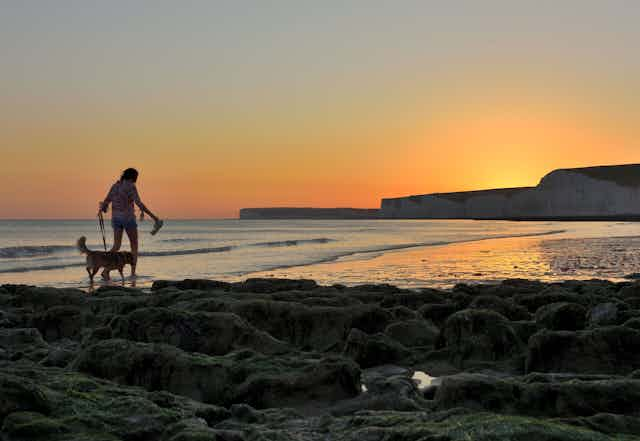This is an article from Curious Kids, a series for children of all ages. The Conversation is asking young people to send in questions they’d like an expert to answer. All questions are welcome: find details on how to enter at the bottom.
We live in Deal, Kent and can see the coast of France from here. The waves lap towards us onto the shore on our side of the Channel, but they also lap towards the people on the opposite shore in Calais. Is there a place in the middle where the waves change direction? – Sebastian, age 12, Kent, UK
Well done for noticing this, Sebastian. This is very true, the waves lap towards England on one shore, and also lap towards France across the Channel.
This happens for a few reasons. First, waves are created by the wind. When the wind blows across the surface of the water, it pushes the tiny particles of water on top of the ocean away from it. Over time, the energy from the wind moving along these particles causes waves to form. The blowing wind keeps pushing the energy along the water, driving the waves away from the place where they began.
The same thing happens when you blow really hard across a basin full of water: the waves you have created travel away from the source (your breath) – not just forwards, but in all directions. Now, if the planet had no land and we lived in a waterworld, the waves would carry on travelling around the globe without anything to stop them. But in reality, we have land such as England and France getting in the way of the waves.
So, as the wind blows through the English Channel – in whichever direction – it pushes the waves away from it, towards both England and France.

There’s another force which causes the waves to lap against both shores. The ground at the bottom of the sea – also known as the “sea bed” – rises from the middle of the channel, like a valley, all the way up to give us the lovely beaches we have on both the coasts.
As the waves get closer to the land, the sea bed also rises towards the shore, causing the waves to slow down. And when they slow down, they get closer together. Think of it like this: when the traffic slows down on the motorway, the distance between the cars gets smaller and smaller as drivers all press on the brakes. In exactly the same way, the distance between one wave and the next – what scientists call the “wavelength” – gets squashed as the waves slow down.
But even when the waves slow down, they still contain all that energy they got from the wind. So, as the wavelength becomes shorter, and the waves have to go slower, they put that energy into growing taller instead.

You will be able to see this when you look out to sea: the waves coming towards the shore get taller and taller, until they’re so tall and close together that they start “breaking”. White foam forms on the top of each wave, and splash! They crash on the shore, transferring all the energy they’ve been carrying onto the land.
This breaking happens at the coastline, both here in England and also in France. If the wind is strong enough, the westward moving waves produced in the English Channel may one day even make it all the way to America. Waves break along every coastline in the world.
Hello, curious kids! Have you got a question you’d like an expert to answer? Ask an adult to send your question to us. You can:
* Email your question to curiouskids@theconversation.com
* Tell us on Twitter by tagging @ConversationUK with the hashtag #curiouskids, or
* Message us on Facebook.

Please tell us your name, age and which town or city you live in. You can send an audio recording of your question too, if you want. Send as many questions as you like! We won’t be able to answer every question, but we will do our best.
More Curious Kids articles, written by academic experts:

